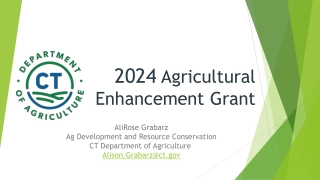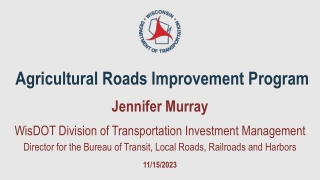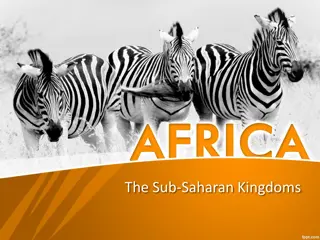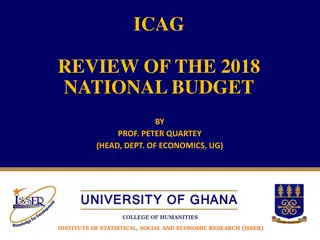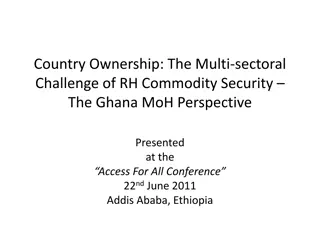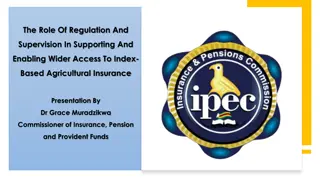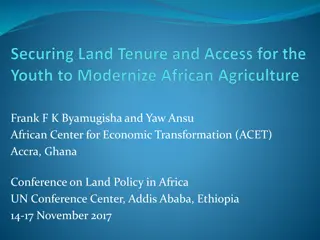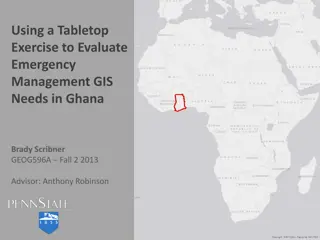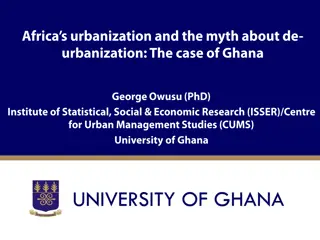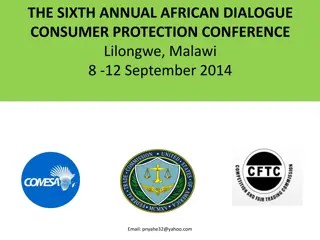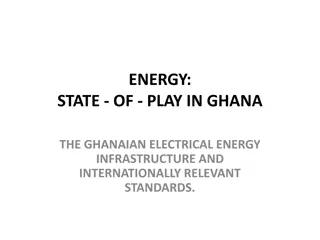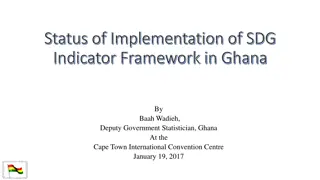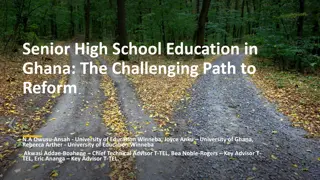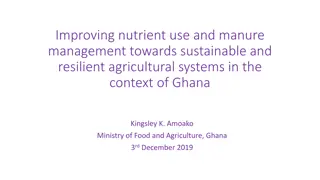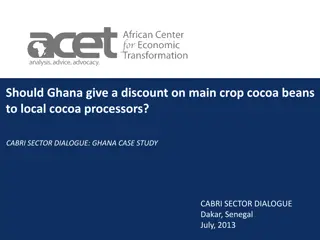Youth Access to Agricultural Land in Techiman Area: A Study on Ghana's Land Policy
The study investigates youth access to agricultural land in Ghana, focusing on Techiman Area within the Brong Ahafo Region. It explores the challenges and opportunities for the youth in obtaining land for agricultural purposes under the customary land tenure system prevalent in the region.
Download Presentation

Please find below an Image/Link to download the presentation.
The content on the website is provided AS IS for your information and personal use only. It may not be sold, licensed, or shared on other websites without obtaining consent from the author.If you encounter any issues during the download, it is possible that the publisher has removed the file from their server.
You are allowed to download the files provided on this website for personal or commercial use, subject to the condition that they are used lawfully. All files are the property of their respective owners.
The content on the website is provided AS IS for your information and personal use only. It may not be sold, licensed, or shared on other websites without obtaining consent from the author.
E N D
Presentation Transcript
BY: JOSEPH KWAKU KIDIDO JOHN TIAH BUGRI (PROF.) & RAPHAEL KASIM KASANGA (PROF.) Department of Land Economy Faculty of Built Environment KNUST, Kumasi 2017 CONFERENCE ON LAND POLICY IN AFRICA, ADDIS ABABA, ETHIOPIA 1
Introduction and Research Problem Study Area Methods Results Recommendations 2
The youth constitute an important human capital for the socio- economic development of Ghana. -they constitute 34.1% of Ghana s population (GSS, 2014) The youth are economically marginalized (Abbink, 2005), -Youth unemployment rate in Ghana estimated at 5.5% (GSS, 2014), -11.7% for Sub-Saharan Africa (ILO, 2013) Agriculture remains the world s single biggest source of employment (World Bank, 2014; White, 2011; IFAD, 2010). Do youth have access to land on favourable terms and viable sizes for agricultural purpose? 3
Land is a key productive resource. Access mechanisms reflect the prevailing land tenure system The customary land tenure system dominates in Ghana -constitute about 80% (Sulemana, 2011; Bugri, 2013). -Excludes groups such as the youth and women from equitable access to land (Kwapong, 2009). Existing studies; Kidido et al. (2017), Amanor (2010), Boni (2008) The study investigated youth access to agricultural land under the customary tenure regime. -Understanding Gender Dimensions 4
The selected Techiman Traditional Area study purposively Covers two administrative districts: -Techiman Municipality -Techiman North district Figure 1: District Map of Brong Ahafo Region Highlighting the Study Area Districts 5
Why Techiman Area? Contributes Ghana s food (TENDA, 2013). substantially to production Strategically located. Has one of the biggest agricultural markets in Ghana (GSS, 2014). Preferred area by some youth to engage in agriculture (Okali and Sumberg, 2012). 6
Sampling Approach Multistage sampling (communities, respondents) Sampling of communities Purposive selection of nine zonal councils capitals (Techiman Municipality 4; Techiman North District 5). Selection of 11 additional towns using simple random approach. Total of 20 communities sampled for the study. 7
Sampling of the Youth Respondents Households were used as the reference point for the sampling of the youth. -The youth respondents were then purposively sampled based on the age range of 15-34 years and involvement in on-farm agricultural activities. 8
Table 1: Respondents in the communities Youth Community Hansua Krobo Tuobodom Nkwaeso Bamiri Twimia-Koase Mesidan Sansama Kuntunso Aworowa Nsuta Buoyem Tanoso Adieso Tadieso Amangoase Tanoboase Offuman Kokroko Fiaso Total 20 27 89 20 12 21 8 13 12 39 18 14 53 5 11 9 6 51 5 22 455 9
Analytical Approach The use of Statistical Package for Social Sciences (SPSS) software tool. Statistical descriptions, cross-tabulations etc. 10
Gender composition of the respondents 299 (65.7%) male 156 (34.3%) female youth Fairly reflects level of youth involvement in agriculture in Ghana. 45.1% of male youth were employed by the agricultural sector compared to 38.3% among the female youth (GSS, 2014) 11
Table 2: Gender Dimension of Youth Land Access and Ownership Gender Item Owns land Yes No Total Access mechanism Purchase Gift Sharecropping Inherited Customary Licence Pledged Rented Total Male 43 (14%) 256 (86%) 299 Male 1 (0.3%) 32 (11%) 46 (15%) 10 (3%) 132 (44%) 1 (0.3%) 77 (26%) 299 (100%) Male Female 31 (20%) 125 (80%) 156 Female 0 21 (14%) 14 (9%) 10 (6%) 92 (59%) 0 19 (12%) 156 (100%) Female 74 381 455 Total 1 53 60 20 224 1 96 455 Source of land acquired Community elders In-law Chief/ Queen mother Father/ Mother Government Family head Other land owners/Usufructs Grand Father/Mother Uncle Others Total Total 0 1 (0.6%) 5 (3%) 2 (1%) 84 (54%) 0 5 (3%) 37 (24%) 8 (5%) 3 (2%) 11 (7%) 156 (100%) 1 11 4 210 1 18 166 22 5 17 455 6 (2%) 2 (0.7%) 126 (42%) 1 (0.3%) 13 (4%) 129 (43%) 14 (5%) 2 (0.7%) 6 (2%) 299 (100%) 12
Figure 2: Land sizes of both male and female youth in the area. 45 40 35 30 RESPONSES (%) Male 25 Female 20 15 10 5 0 Below 2 acres 2-3 acres 4-5 acres 6-8 acres 9-12 acres 13-15 acres Above 15 acres Source: Field data, 2016 Male (n=299; Female (n=156) 13
Table 3 Landholding sizes of both male and female youth Land Size Residence 1- 3 acres 4 acres Total 182 (60.9%) 117 (39.1%) 299 (100%) Male 114 (73.1%) 42 (26.9%) 156 (100%) Female 296 159 455 Total Chi-square value= 6.720, df = 1, p-value= 0.01) at 95% confidence interval and a margin of error of 5% 14
The model need to function under a land policy which focuses on the youth. Sound land policies can safeguard the livelihood of the very vulnerable by giving them access to land through rental markets.. . (World Bank, 2012) -There is the need for youth agricultural land access policy or a review of the existing National Land Policy to capture the model interventions and special provisions to assist the youth. The study recommends furtherresearch into youth access to agricultural land under the main customary tenure regimes across the country as a means of formulating an evidence- based youth agricultural land access policy. 17


